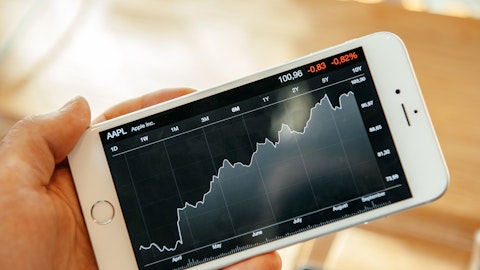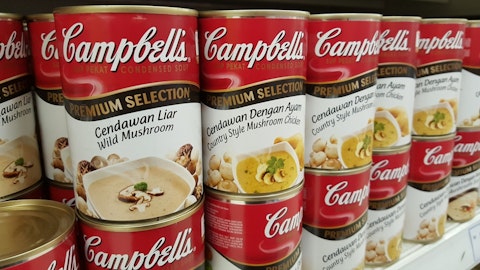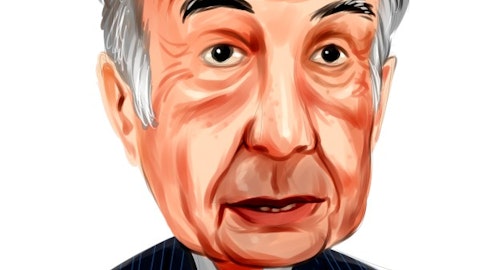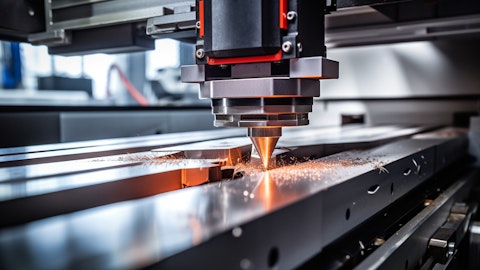Tim Donahue: Well, I think what’s impacting demand in Europe is the pressure on the consumer from all the other things that they are faced with, energy and all their other costs. I don’t think the expulsion of one particular brand from a large retail chain affects us because it’s just replaced with other products on the shelves. Part of the issue in Europe is that this has more to do with government control around inflation than it does with the retailer. And so the retailer, in my view, I think the retailer is looking to avoid a government problem by putting the blame on the big soft drink company. I think if you were to – if somebody was to walk through the store, you would see that that particular soft drink company, what they are charging for beverages is not the highest charge for beverages on the shelf, but they do have other products perhaps in the retail store, and they are being punished across their entire portfolio, be it snacks and soft drinks, whereas their soft drink pricing is not the highest in the store.
So I think – but this has more to do with overreaching government regulation in that central banks around the world have created a problem for all of us, specifically consumers on the lower end of the scale, and they are trying to paint somebody else as the bad guy and they first point their finger at the retailer, and then the retailer points their finger at the CPG. So this will sort itself out in time. But specifically, the expulsion – again, I’ll say it again, the expulsion of one product does not impact demand. It’s just replaced with another product. What impacts demand is significant inflation across a variety of cost buckets for the consumer, notably energy.
Mike Roxland: Got it. Thank you, Tim. And just one quick follow-up on North America. How much additional runway do you think you have with respect to share gains? Is the something that has benefited the company in recent years? You think a lot of the share gains versus some of your peers is not a high low or do you still think there is some road left?
Tim Donahue: How would I say this? I would say that – I would say that we’ve not been – well, let me say it this way. I think – you should be able to appreciate from the margins we have versus others margins that we’ve tried to grow our business in a responsible way in the marketplace. That is to say, that the share gains we’ve experienced were more likely the result of higher aspirations by others, which were not fulfilled and/or customers wanting to rebalance. I do think that by the end of – I think by the end of 2024 from where we sit, we think the market vis-a-vis customers and suppliers is probably set where it’s going to be for the next couple of years. It’d be difficult for me to understand significant share moves beyond that, unless somebody does something extremely foolish.
Mike Roxland: Got it. Thank you, very much, and good luck with 2024.
Tim Donahue: Thank you.
Operator: Thank you. We will move now to the next question coming from the line of Ghansham Panjabi of RW Baird. Your line is open.
Ghansham Panjabi: Hi, guys. Good morning.
Tim Donahue: Good morning, Ghansham.
Kevin Clothier: Good morning.
Ghansham Panjabi: Good morning. Maybe we could first start off with an EPS bridge, if you could, off of the $586 million in earnings for 2023. You have a lot going on, cost savings, change in useful life for the asset, last issue you called out and non-reportable. Can you sort of dimensionalize those impacts on the EPS bridge?
Tim Donahue: Yes. So what do we have? We’ve got $0.30 coming from – roughly $0.28 to $0.30 coming from the depreciation change. You’ve got higher depreciation year-on-year just from prior year’s capital investment. So I wouldn’t say it’s a wash, but it’s probably two-thirds of the depreciation changes offset by higher depreciation from prior year’s capital investment. You got the benefits of restructuring. And then you’ve got pretty sizable headwinds if you combine equipment, aerosols in Mexico. And I bet you if you took the equipment business, that could be down – Ghansham, year-on-year, that could be down on the order of $40 million. Aerosols and Mexican mix more one-way glass versus returnable in the PPI lag.
We’re on a 1-year lag basis for PPI in Mexico. So as utility prices go up and down. We either get it and pay it the next year or pay it this year and get it next year, and we’re in the cycle where we will get it next year. But I would say, if you took the equipment business, aerosol in Mexico, you’re looking at combined $80 million across those three buckets. Offset by volume gains and some restructuring gains.
Ghansham Panjabi: And the cost savings associated with the restructuring, what is that number?
Tim Donahue: Yes. I mean think about this year, it sound’s like we will get everything done. Think about like $15 million, and we get more next year. Generally, there are – these are 1-year paybacks. The two plants in Asia were older plants built in the early ‘90s by a company we acquired. They were built – the one was built in the market it should have never been built in. These were initially built as slow speed lines. We’ve sped them up, the median speed lines. But in today’s marketplace, they can’t compete with a high-speed line factory. So the savings there are not as great as you would otherwise imagine because they weren’t very expensive to begin with. You got to remember, you go to a – you take an old plant out, there is no depreciation on it, so you don’t get the depreciation savings.
Ghansham Panjabi: Yes. Understood. And then on North America, with the shutdown in Mississippi, is that just sort of a one-off sort of adjustment? Or is this something that’s part of a more holistic approach towards optimizing your footprint in North America? And then just the last question, just to clarify, on the off-balance sheet financing unwind, I think it was $200 million in 2023. Is there – is that going to be an incremental headwind in 2024 as well? And if so, how much?
Tim Donahue: It will not be a headwind in 2023. We took the opportunity to reduce the off-balance sheet finance – it’s just financing of another form, Ghansham. We’re just trying to optimize the cost of financing. We – we generated probably on the order of $300 million to $350 million of working capital source of cash. So we offset it by buying that down off balance sheet. The closure of Batesville, I described that to you as one-off, post the closure of Batesville, our utilization rates are mid-90s. I’ll bet you the industry is 90 to 92 right now, and we’re probably 94 to 96. So we’re in pretty good balance in North America.
Ghansham Panjabi: Alright. Thank so much.
Tim Donahue: You are welcome.
Operator: Thank you. We will move now to the next question coming from the line of Adam Samuelson of Goldman Sachs. Your line is now open.
Adam Samuelson: Yes. Thank you. Good morning, everyone.
Tim Donahue: Good morning.
Adam Samuelson: Good morning. First question, maybe just if we could unpack the outlook on Transit. Specifically – and as we think about the outlook for the year, just – I know you talked about income growth, but can you talk about the top line volume, price/mix assumptions against that? Is there any kind of carryover savings from the restructuring actions? Are those effectively annualized at this point? And just how should we think about incremental kind of margins from here if demand did actually improve?
Tim Donahue: Yes. So I think we described the business to you all when we acquired it in 2018 as a – as a GDP-like business. So in the absence of a large capital plan organic or inorganic, this business is going to grow with GDP. And as you know, the industrial activity is down. We’ve been able to offset that with cost reductions over the last couple of years. I’d tell you that little – it’s a little difficult to describe volume to you, but I can give you volume dollars. Our volume dollars in Q4 were down on the order of 3.5%. And for the full year, we’re down in the order of 8.5%. That’s volume dollars. But obviously, as you could tell by the income results, that was significantly offset by cost reduction activities and better price/cost management.




